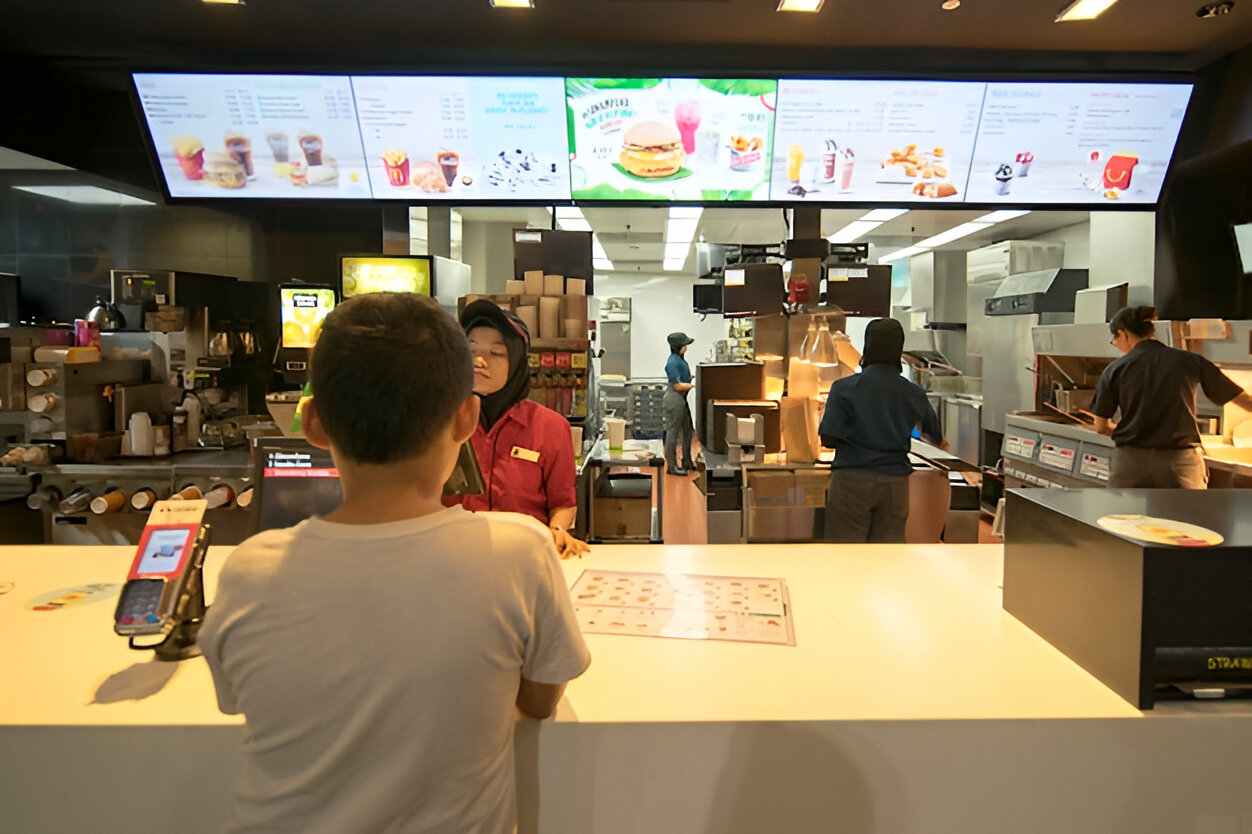 SHARE
SHARE
Understanding Quick Service Restaurant (QSR): Concept, Characteristics, and Advantages
Sovia
Ever wondered how fast-food restaurants can serve meals within minutes, even with long queues?
The secret lies in a structured and efficient operational system, commonly known as the Quick Service Restaurant (QSR) model.
QSR is not only about speed; it's also about maintaining taste consistency, operational efficiency, and overall customer satisfaction.
This article dives into what QSR really is, its key features, and why it's become a favorite business model in today’s modern food and beverage (F&B) industry.
What is a Quick Service Restaurant (QSR)?
QSR stands for Quick Service Restaurant, a type of eatery that prioritizes fast, efficient service.
This model is designed for customers with limited time who seek convenient, no-fuss dining experiences.
Menus in QSRs are typically standardized to accelerate the food preparation process.
Meals are prepared quickly and can be taken away, delivered, or eaten on-site.
You may recognize this concept from well-known global brands like McDonald’s, KFC, or Burger King.
Typical menu items include burgers, pizza, fried chicken, and sandwiches.
Prices vary depending on the brand, location, and menu items, but the key advantages remain: fast service and easy access.
6 Key Characteristics of Quick Service Restaurants
Source: freepik.com
QSR emphasizes speed, efficiency, and accessibility, making it ideal for people who need quick meals without sacrificing taste.
Here are 6 defining traits that set QSRs apart:
1. Simple, Focused Menus
QSRs typically serve easy-to-prepare items like burgers, fried chicken, or pizza.
Fewer menu options mean faster decision-making for customers and quicker kitchen operations.
2. Minimal Dining Space
QSRs are not designed for long dining experiences. Some offer seating, but it’s usually small and functional.
Most customers choose takeaway or delivery instead.
3. Extended Operating Hours
Many QSRs stay open late—some even 24/7—making them accessible anytime, whether it’s early morning or late at night.
4. Strategic Locations
QSRs are often placed in high-traffic areas: malls, office districts, transit hubs, or major roads.
These spots make it easy for busy customers to grab a quick meal during their activities.
5. Takeaway and Drive-Thru Services
In addition to dine-in, QSRs offer takeaway and drive-thru options.
These services are ideal for on-the-go customers who want food fast without leaving their vehicle.
6. Consistency Across Locations
One of QSR’s strongest traits is consistency.
Regardless of which outlet you visit, you can expect the same taste, presentation, and service—thanks to strict SOPs and centralized control.
Read more: 5 Factors Why Food Delivery Services are Thriving
The Role of a QSR Officer in Daily Operations
Behind every smooth-running QSR is the QSR Officer, a key team member managing kitchen flow, cashier operations, and customer service.
Their responsibilities include:
- Ensuring food quality meets brand standards
- Streamlining workflows for maximum efficiency
- Maintaining high levels of customer satisfaction throughout the service experience.
This role is critical to achieving QSR’s promise of fast and consistent service.
Why are QSRs So Popular?
QSRs are the perfect answer for today’s fast-paced lifestyle. Here’s why people love them:
1. Fast & Efficient Service
QSRs offer a practical solution when you're short on time.
The average wait time for food prep is just 3–10 minutes—perfect for busy hours or when you're in a rush.
2. Widely Available Locations
Most QSRs are situated in strategic spots, including rest areas and airports. This wide availability means you can access a QSR almost anywhere, anytime.
3. Convenient Ordering Systems
QSRs commonly use tech-based solutions like mobile apps, self-service kiosks, or QR code ordering.
These systems minimize interaction and improve service speed.
4. Attractive Promotions
Frequent discounts and deals help QSRs retain customer loyalty. You can enjoy tasty meals without breaking the bank.
5. Family-Friendly Menus
QSRs offer menus suitable for kids to adults.
Some even have children’s meal packages and healthier options to cater to diverse needs.
Read more: 5 Reasons Why Seasonal Menus Are a Must-Try for Culinary Entrepreneurs
FAQ: Quick Service Restaurant (QSR)
1. What is a Quick Service Restaurant (QSR)?
A QSR is a fast-food restaurant model focused on speed, standardization, and operational efficiency—designed for time-conscious customers.
2. How is a QSR different from a regular restaurant?
QSRs prioritize quick service, limited menus, and minimal table service. Regular restaurants often offer a broader menu and full dining experience.
3. What are examples of QSR brands in Indonesia?
Popular QSR brands in Indonesia include McDonald’s, KFC, HokBen, Richeese Factory, Rocket Chicken, and Sabana Fried Chicken.
4. Is a QSR business suitable for culinary beginners?
Yes. With a structured system and digital tools, QSRs can be a great starting point—provided there’s solid inventory, staffing, and tech support.
5. How do I build a restaurant like a QSR?
Start with a simplified menu, clear kitchen SOPs, and technology like POS, kitchen display systems, and online ordering.
Tools like ESB’s integrated solutions can help you build a streamlined QSR operation from the ground up.
Conclusion
QSR is a smart solution for modern life, fast, efficient, and scalable.
With structured workflows, supportive technology, and consistent quality, it offers an ideal model for entrepreneurs looking to thrive in the food industry.
Want to build a business as agile as McDonald’s or KFC?
Let ESB help you go digital, our all-in-one system includes POS, kitchen display, ERP, and online ordering tools to streamline your entire restaurant workflow.
Ready to scale your F&B business like a pro? Contact the ESB team now for a free consultation!
 SHARE
SHARE




